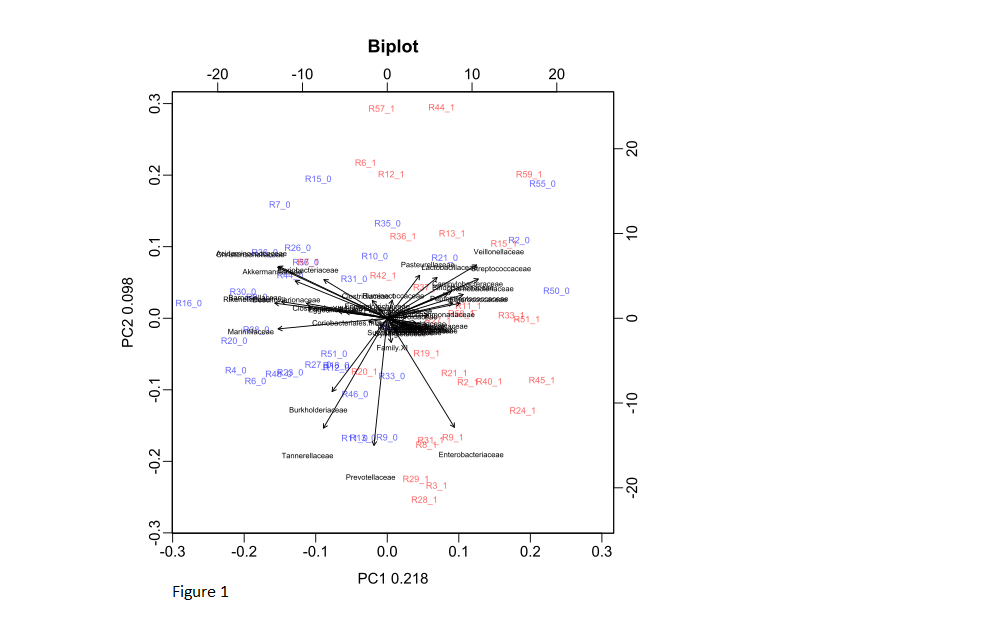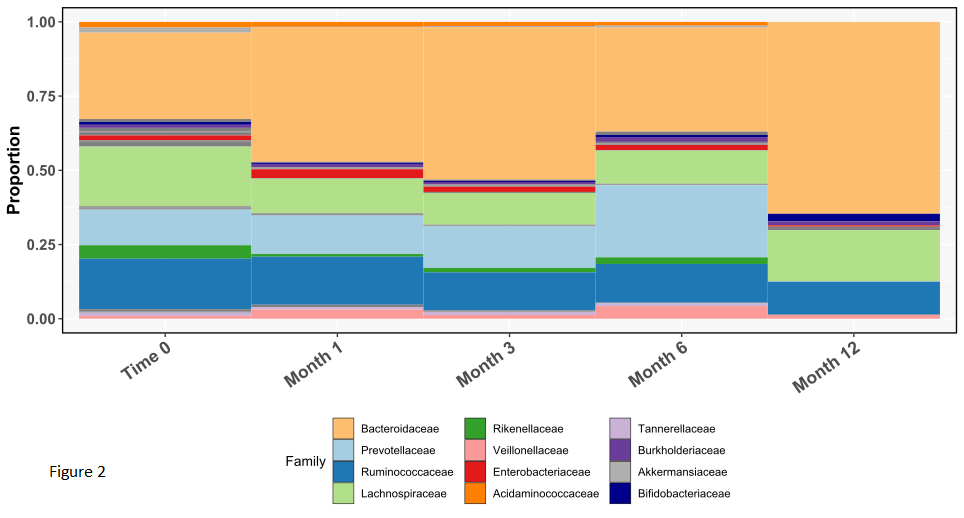Longitudinal Analysis of the Gut Microbiota Structure and Function After Renal Transplantation
1Institute of Immunity and Transplantation, UCL, London, United Kingdom, 2Institute of Child Health, UCL, London, United Kingdom, 3Department of Renal Medicine, UCL, London, United Kingdom
Meeting: 2022 American Transplant Congress
Abstract number: 1296
Keywords: Adverse effects, FACS analysis, Multivariate analysis, Rejection
Topic: Basic Science » Basic Science » 16 - Biomarkers: -omics and Systems Biology
Session Information
Session Name: Biomarkers: -omics and Systems Biology
Session Type: Poster Abstract
Date: Monday, June 6, 2022
Session Time: 7:00pm-8:00pm
 Presentation Time: 7:00pm-8:00pm
Presentation Time: 7:00pm-8:00pm
Location: Hynes Halls C & D
*Purpose: Despite marked improvements in outcomes after renal transplantation, graft loss from alloimmune pathology and adverse side effects including urinary tract infections and diarrhoea remain a significant problem. Increasing evidence continues to reveal the multifaceted influence of the gastrointestinal microbiota on host immunity. Our work aims to delineate the associations between the gut microbiota and the immune system and thus identify their contribution to clinical outcomes post-transplantation.
*Methods: Eighty transplant recipients and 19 live donors have been recruited and followed longitudinally (average time of collection~12 months; collection includes urine, stool and blood). To date, multi-parametric flow cytometry, stool (16S rRNA sequencing, metabolomics) and gastrointestinal permeability analyses has been performed. Investigating the adaptive immune cell populations and the structure and function of the gastrointestinal microbiota will allow linking these modalities together.
*Results: For majority of the recipients’, a decrease in alpha diversity was a common feature post-transplantation; with no return to the initial pre-transplant baseline in diversity or taxonomy. A decrease in short-chain fatty acid producing taxa such as Lachnospiraceae and an expansion of potentially pathogenic Streptococcaceae and Enterobacteriaceae families was also observed (Figure 1). An increase in Bacteroidaceae, likely due to antimicrobial administration, in both donors and recipients post-transplant was also common (Figure 2). Patients who developed urinary tract infections exhibited specific changes in the microbiota in comparison to those who do not.
*Conclusions: Our study offers an early insight into the dynamics of the microbial-immune axis in a UK renal transplant cohort and is the first to report a parallel investigation in live-donors. Extensive investigations of the various measured parameters should help inform us as to the most appropriate therapeutic modulation in this patient cohort.
To cite this abstract in AMA style:
Vaitkute A, Chang FYuen, Greco A, Chong S, Mahdi H, Bajaj-Elliott M, Pesenacker A, Motallebzadeh R. Longitudinal Analysis of the Gut Microbiota Structure and Function After Renal Transplantation [abstract]. Am J Transplant. 2022; 22 (suppl 3). https://atcmeetingabstracts.com/abstract/longitudinal-analysis-of-the-gut-microbiota-structure-and-function-after-renal-transplantation/. Accessed December 29, 2025.« Back to 2022 American Transplant Congress


